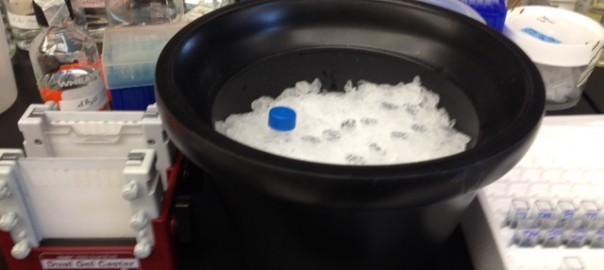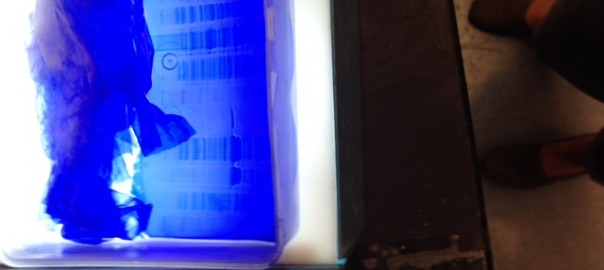I finished my internship yesterday, and finished, as Brian said, “with a bang.” I was able to run an experiment all the way through, from cultivated the bacteria, to purifying the protein, to running an experiment on how the protein was bonding with peptides. Even more exciting, I was able to get awesome results that Erin, my postdoc mentor, is going to use in her upcoming paper. The idea that my figures and my methods are going to be included in a scientific publication makes me so proud. I never imagined that I would be able to achieve that in this internship!
I think my “aha! moment” also came with the end of this experiment. Throughout much of my internship, I didn’t feel that I fully understand all the elements of what I was studying. I didn’t, for instance, fully understand all the different controls that I was integrating in to the experiment. When I saw how excited Erin was about my results, I decided that I needed to sit down and figure out what I was missing. With her help, I suddenly felt like I got it! Flipping through my lab notebook, I could see the process from beginning to end, how each part of the experiment went towards building clear results. I could also see my own progress. A few weeks ago, my films were cloudy. When I purified protein, there were multiple bands that I hadn’t eliminated. My films yesterday were clean, publication quality. They indicated clearly where protein was binding. All of my controls were even and were showing up as we expected.
Part of what I wanted to get out of this internship was to get a grasp of the scientific process, of the thought that went into designing an effective experiment and following it all the way through. I’ve discovered that not only do I understand, but I was applying this knowledge all along to make my experiments better. When something was going wrong, I would talk to Erin or Brian to figure out how to make it better. By the end, I wasn’t going to them at all. For example, when I saw last week that my controls were showing too much signal on the films, I upped the concentration of the gel I ran so the protein couldn’t “spread” as easily. I also loaded less with a higher concentration of loading dye. When I did that, my controls came out perfect!
Now that I have my “lab cred” I’m excited about doing research in the future. Understanding the process scientists go through every day to build successful experiments will help me design studies in education. In the fall, I want to look into how augmented reality apps can help my English Language Learners. Maybe I’ll even look into publishing in some education journals in the future!


